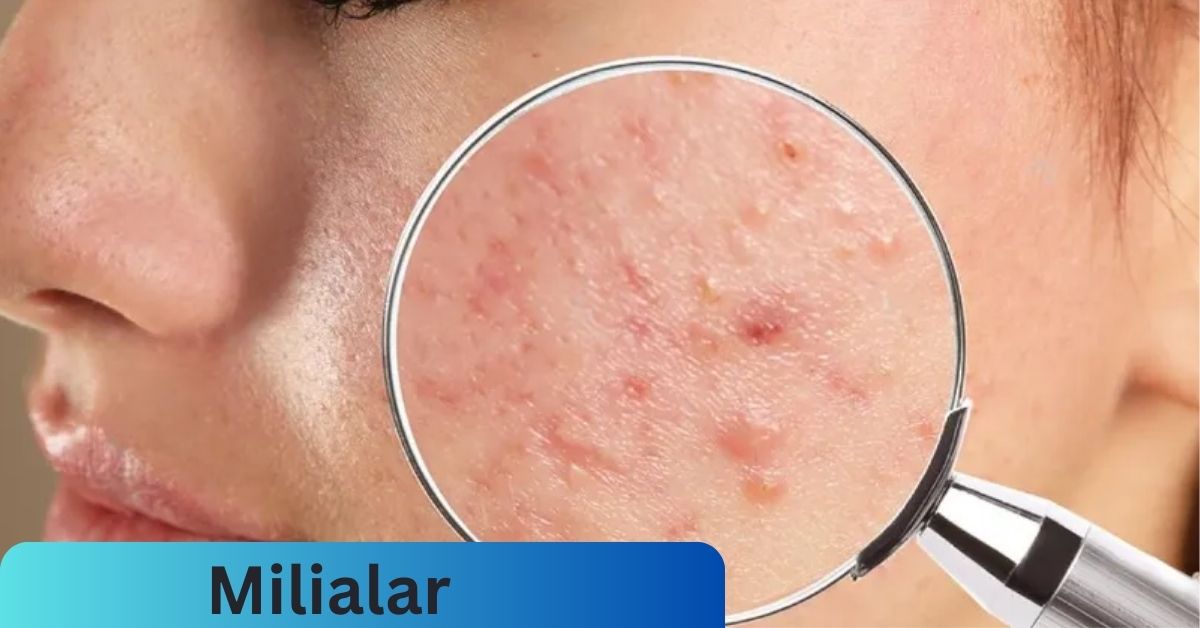Milialar – A Comprehensive Guide!
Milium cysts (milia) and milialar are common skin conditions that can cause concern and discomfort. Understanding their nature and treatment options is essential for managing these conditions effectively.
Milia and milialar refer to skin conditions characterized by small, white bumps caused by trapped keratin. They are present in various types and can occur due to multiple factors.
This article explores milium’s diverse root causes, including overproduction of keratin and damage to glands, signs, symptoms, diagnosis methods, treatment options, preventive measures, and potential home remedies.
Table of Contents:
What Is Milialar? – Dive In It!
Milia, also called milium cysts or milialar, presents a unique dermatological condition characterized by the emergence of tiny, dome-shaped cystic bumps that often appear in a white or yellowish coloration on the skin’s surface.
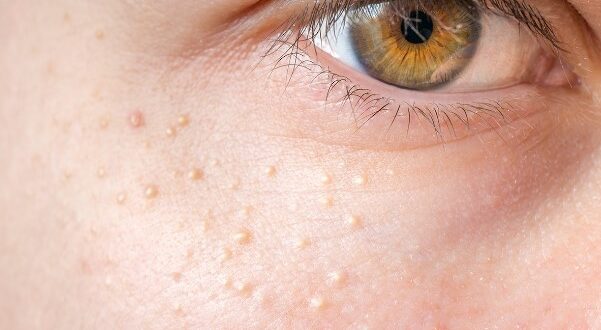
While typically harmless, these small cysts possess a distinctive appearance that can raise concern and intrigue among individuals noticing their conspicuous presence.
These minute cysts, varying in size and usually measuring no more than 2 millimeters in diameter, tend to form individually or in clusters.
Their unique color and shape make them stand out, prompting attention, mainly when located on prominent areas of the face, such as around the eyes, cheeks, nose, and forehead.
Though painless and benign, their visibility can evoke self-consciousness, driving individuals affected by milia to seek guidance from dermatologists or healthcare professionals for advice on managing these skin irregularities.
Understanding the nature and impact of milia aids individuals in making informed choices regarding potential treatments or simply finding reassurance about their harmless nature, empowering them to address their skin concerns effectively.
Types of Milialar – Let’s Explore!
1. Neonatal Milialar:
Primarily observed in newborns, neonatal milia are transient, manifesting as tiny cysts that typically disappear without intervention shortly after birth.
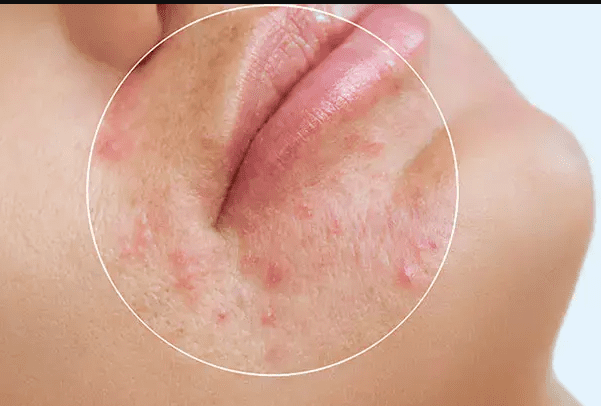
2. Primary Milia:
Predominantly affecting older individuals, primary milia may necessitate specific attention and targeted treatments due to their persistence.
3. Juvenile Milialar:
Juvenile milia exhibit distinct characteristics and patterns commonly found in children compared to other types, warranting attention in pediatric dermatology.
4. Milia En Plaque:
This variation presents as raised, plaque-like formations comprising multiple milia clustered closely together, often posing cosmetic concerns.
5. Multiple Eruptive Milia:
Recognized by clusters of milia simultaneously surfacing on various areas of the body, this form represents a unique pattern among milia types.
6. Traumatic Milialar:
Arising as a result of skin trauma or injury, traumatic milia emerge during the skin’s healing process and may persist if not appropriately addressed.
Read Also: 10 Low-Taper Fade Haircut Ideas For Men – Ultimate Guide For You!
Causes Of Milialar – You Must Know!
Milia’s origin involves a multifaceted interplay of factors contributing to its formation. In newborns, these cysts often arise due to the immature development of sweat glands, causing keratin to become trapped beneath the skin’s surface.
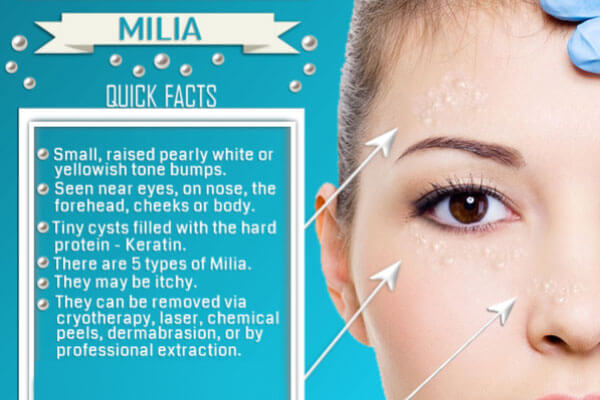
Conversely, in older individuals, various mechanisms contribute significantly to the development of milia. These include overproduction of keratin, and entrapment beneath the skin.
Damage inflicted upon oil glands or sweat ducts, specific skincare or cosmetic products that potentially block pores, and genetic predispositions.
Understanding these intricate factors aids in comprehending the diverse contexts in which milia emerge and guides potential approaches for their effective management.
The occurrence of milium cysts often prompts individuals to seek clarification about their signs and symptoms, fostering a better grasp of these skin irregularities.
Identifying milia involves recognizing their diverse sizes, potential color variations that range from white to yellowish hues, and their specific locations on the body.
Moreover, comprehending the potential complications and cosmetic concerns stemming from these cysts becomes paramount in formulating comprehensive treatment strategies.
This understanding facilitates effective management and empowers individuals to make informed decisions regarding their skin health and aesthetic concerns.
Read Also: How Long Does It Take You To Do A Haircut? – Let’s Explore It!
Signs And Symptoms Of Milialar – Check It Out!
Identifying milium cysts entails a nuanced observation encompassing various facets to recognize their presence comprehensively.
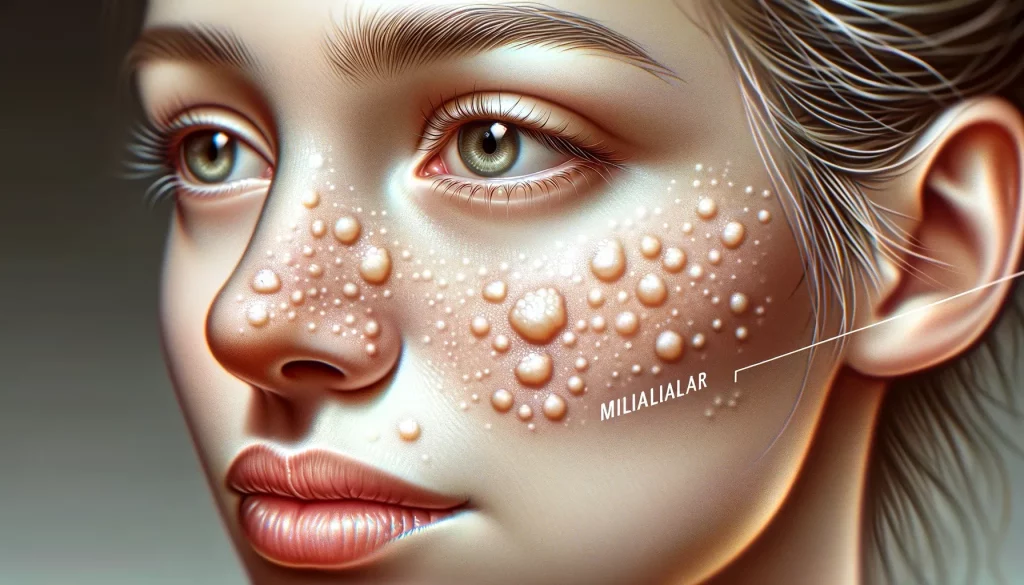
These cysts, characterized by their tiny, dome-shaped appearance, exhibit varying sizes that typically range from barely visible to around 2 millimeters in diameter.
The diverse sizes may contribute to their discrete yet noticeable skin surface presence. Moreover, discerning the potential color variations of milia – often ranging from pristine white to subtle yellowish hues – aids in their identification against different skin tones and backgrounds.
Furthermore, the specific locations where these cysts emerge play a pivotal role in their recognition. Milium cysts commonly appear in prominent facial areas around the eyes, cheeks, nose, and forehead, although they may also manifest on other body parts.
Understanding these cysts’ potential complications and cosmetic concerns is crucial for effective management and treatment planning.
While generally benign and painless, their conspicuous presence might lead to aesthetic problems, prompting individuals to seek guidance for potential treatments or reassurance about their harmless nature.
This comprehensive comprehension equips individuals and healthcare professionals with the necessary insights to address and manage these skin irregularities effectively.
Read Also: When Can I Use Conditioner After Lice Treatment? – 2023 Details!
Diagnosis And Evaluation – Uncover The Truth!
Diagnosing milia involves a meticulous examination conducted by dermatologists or qualified healthcare professionals to uncover the presence of these minute cysts.
Visual inspection forms a crucial aspect of confirming the existence of milium cysts. Sometimes, a skin biopsy may be recommended to ensure an accurate diagnosis, ruling out other potential dermatological conditions that might mimic milia.
This thorough diagnostic approach aims to provide clarity and certainty, facilitating tailored and effective treatment plans tailored to individual needs. Moreover, a comprehensive evaluation of milia extends beyond mere identification.
It encompasses a thorough assessment of the skin’s overall condition, a detailed review of the patient’s medical history, and the title of underlying factors contributing to the development of milium cysts.
This holistic evaluation equips healthcare professionals with crucial insights, enabling them to effectively devise personalized treatment strategies that address specific circumstances and individual requirements.
Medical Examination For Milialar – Find Out!
The comprehensive medical examination to address milia involves a meticulous evaluation focusing on various dimensions of the skin’s condition.
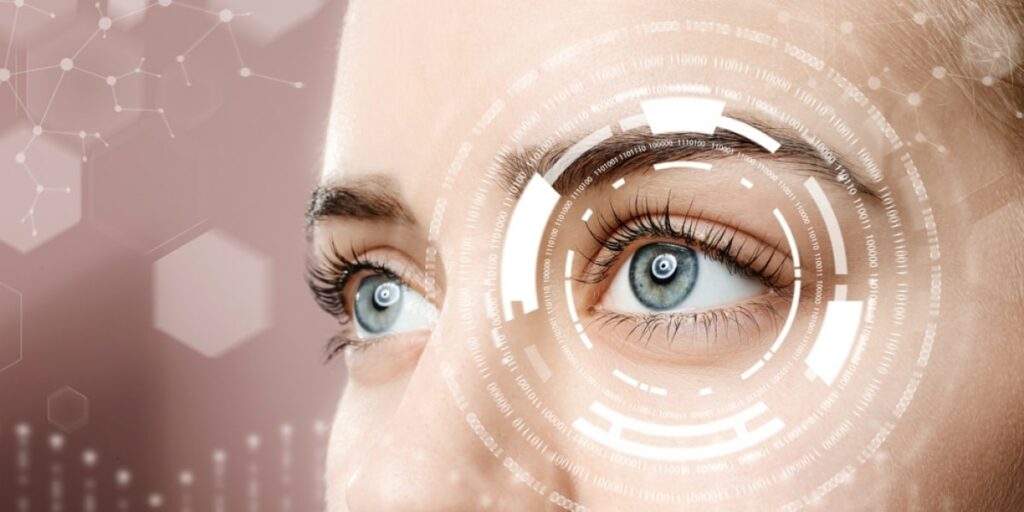
It goes beyond a surface-level assessment, encompassing a detailed analysis of the skin’s texture, tone, and any underlying issues that may contribute to the development of milium cysts.
This in-depth exploration aids healthcare professionals in gaining a comprehensive understanding of the broader skin health context in which milia emerges, allowing for tailored treatment approaches.
Simultaneously, an extensive review of the patient’s medical history plays a crucial role in this evaluation process.
By delving into prior skin conditions, medication history, lifestyle habits, and skincare routines, healthcare professionals seek valuable insights that could shed light on potential triggers or underlying factors contributing to milia formation.
This thorough examination and review facilitate the formulation of personalized treatment strategies, ensuring that the approach addresses the milia and aligns with the individual’s specific needs and circumstances for optimal care and management.
Read Also: Can I Get A Haircut After Lice Treatment At Home? – Hairstyling After Removing Lice!
Milialar Treatment Options With Medical Interventions – For Details!
1. De-roofing or Extraction:
Dermatologists perform a precise procedure involving a tiny incision to extract the contents of the milia cyst. This method aims to achieve a smooth, blemish-free skin surface by carefully removing the cysts.
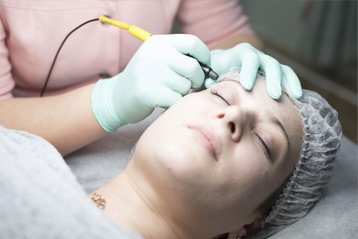
2. Cryotherapy:
Liquid nitrogen is used in cryotherapy to freeze milia, causing them to diminish or fall off. This targeted technique effectively addresses specific areas without affecting the surrounding skin.
3. Topical Retinoids or Chemical Peels:
These non-invasive treatments aid in exfoliating the skin and reducing milia appearance. Retinoids derived from vitamin A help unclog pores, while chemical peels promote exfoliation, improving skin texture and reducing milia.
Read Also: Spicyrranny – A Tasteful Journey Awaits!
Home Remedies And Preventive Measures For Protection From Milialar – All You Need!
1. Gentle Exfoliation:
Regular exfoliation with mild scrubs or non-abrasive cleansers can help prevent the accumulation of dead skin cells contributing to milium cyst formation.
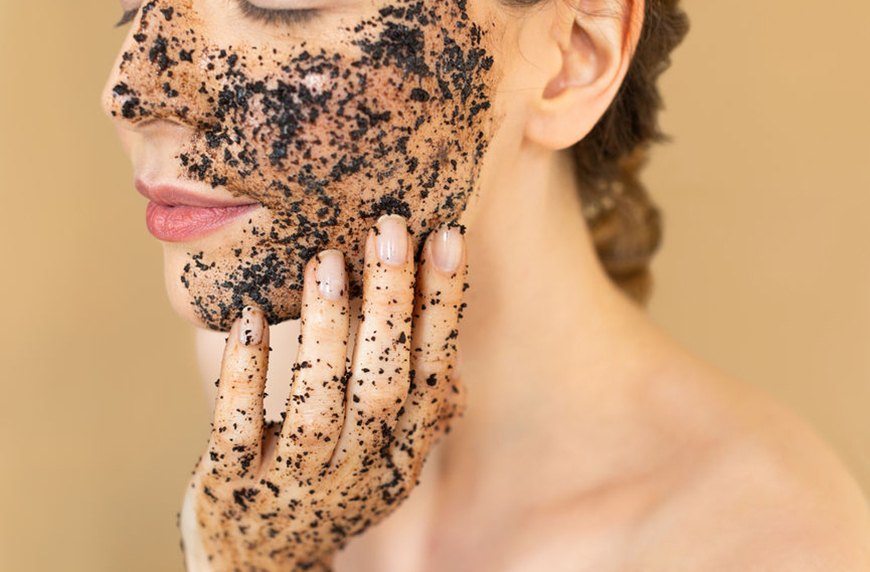
2. Avoidance of Heavy Skincare Products:
Using non-comedogenic products and avoiding heavy creams or makeup can prevent pore blockages, reducing the likelihood of developing milia.
3. Milialar Treatment Options
Treatment for milialar, a variant of milia characterized by larger cysts, often involves similar approaches to those for milia. However, professional intervention may be more commonly required due to these cysts’ more prominent size and potentially more profound location.
Conclusion:
In short,
Milia and milialar, while often benign, can impact one’s skin appearance and confidence. Understanding their causes, types, and available treatment options is essential for managing these skin conditions effectively.
Consulting with a dermatologist or healthcare provider ensures proper diagnosis and personalized care, improving skin health and overall well-being.
Frequently Asked Questions (FAQs)
1. Are milium cysts contagious?
No, milium cysts aren’t contagious. They result from keratin buildup and aren’t caused by bacteria or viruses, so they can’t be transmitted.
2. Can milia be prevented?
While prevention isn’t always guaranteed, non-comedogenic products and gentle exfoliation may reduce the risk of milia formation.
3. Are there home remedies to remove milia?
Some try home remedies like gentle exfoliation or retinoid use, but consulting a dermatologist is advisable for safe treatment.
5. Do Milialar cysts go away on their own?
Neonatal milia may resolve without treatment, but milia in older individuals may persist and could need professional removal.
6. Are there risks in removing milia at home?
Yes, home removal carries risks like scarring or infection. Seeking professional guidance is safer for effective removal.

